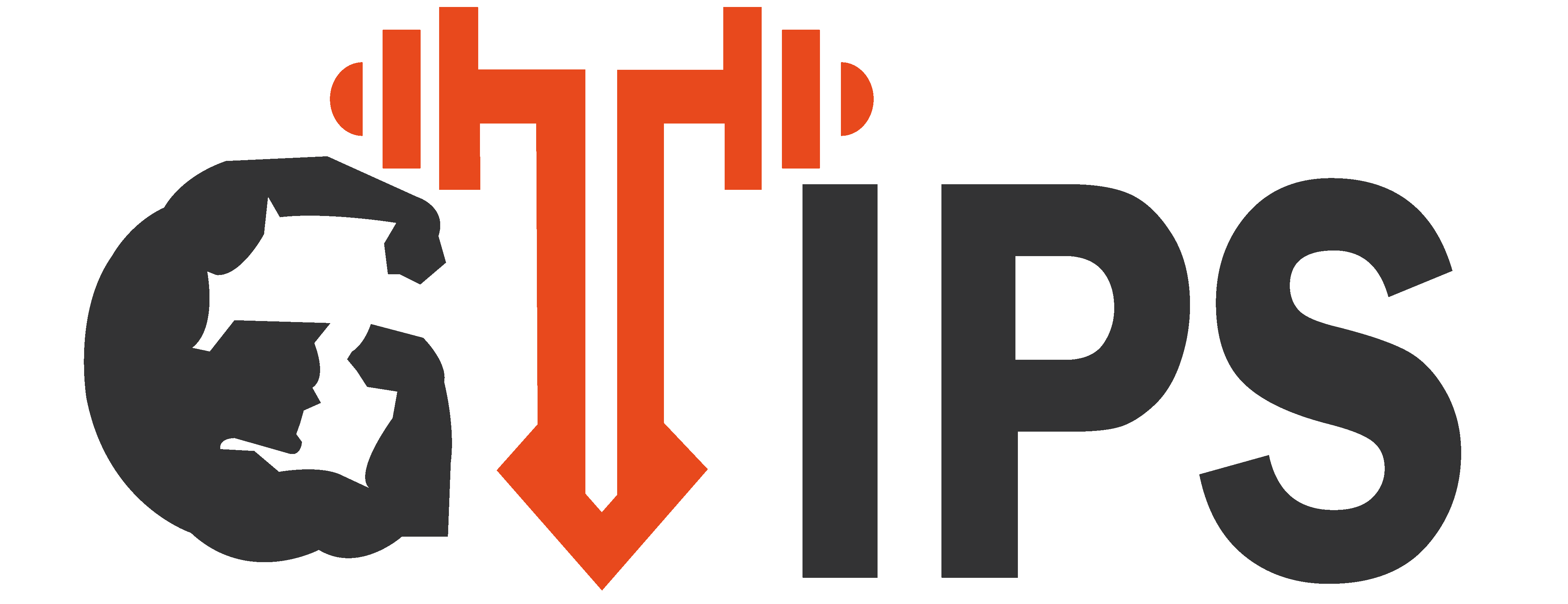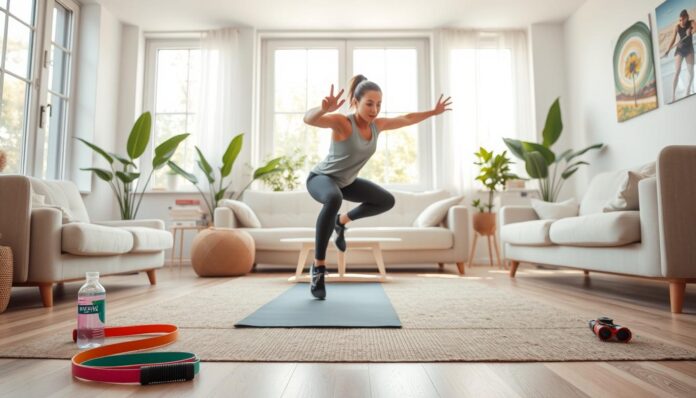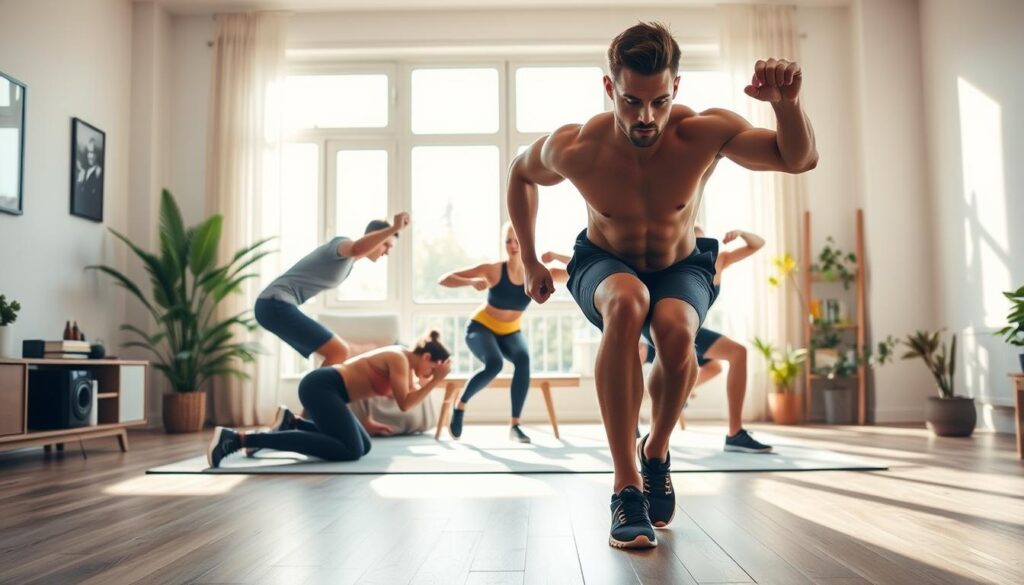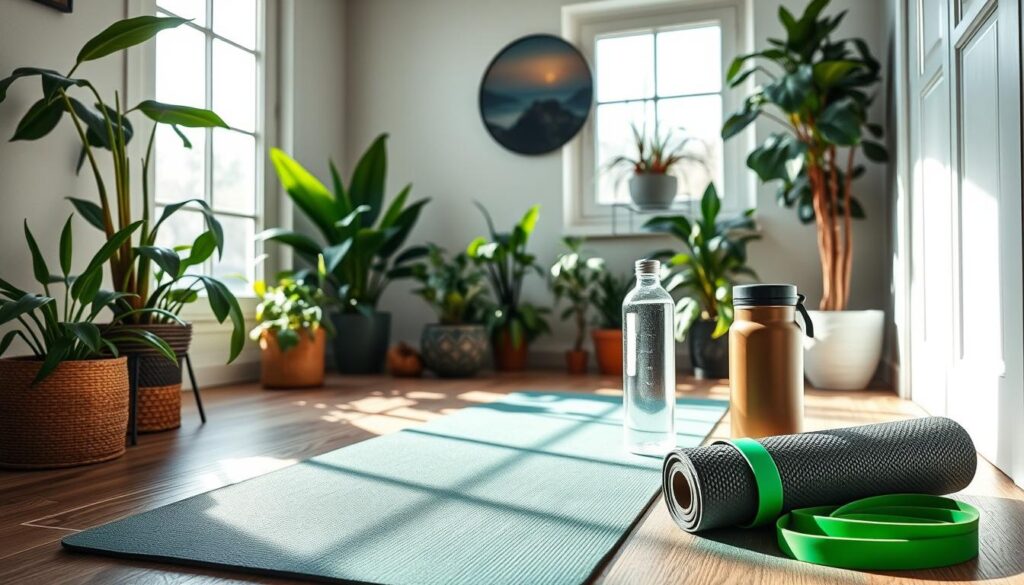Reaching your fitness goals doesn’t require expensive gym memberships or bulky equipment. Effective home workouts can help you stay fit and healthy without any special gear. They are perfect for beginners or experienced athletes looking to keep up their routine.
Using your own bodyweight, you can work out your muscles and improve your heart health from home. These effective home workouts save time and money, making them great for those with busy lives. Plus, you can easily fit them into your daily routine, without needing to go to the gym.
Home fitness routines are great for everyone, no matter your fitness level. They help you work out your whole body, focusing on all major muscle groups. Whether you want to get stronger, more endurance, or just stay healthy, these effective home workouts can be adjusted to fit your needs and goals.
Key Takeaways
- Effective home workouts provide a time and cost-efficient way to achieve your fitness goals.
- No-equipment workouts offer convenience and accessibility, allowing you to train at your own pace and on your schedule.
- Home fitness routines engage your entire body, targeting all major muscle groups for a well-rounded approach to physical improvement.
- Bodyweight exercises form the core of effective home workouts, with options for beginners, intermediate, and advanced fitness levels.
- Proper warm-up and safety protocols are essential for maximizing the benefits and minimizing the risk of injury during home workouts.
Understanding the Benefits of No-Equipment Training
Finding time for a good workout can be tough today. But, bodyweight exercises let you do a full-body workout at home. You don’t need expensive gym memberships or big equipment. This makes at-home strength training great for everyone.
Time and Cost Efficiency
No-equipment training saves you time and money. You skip gym fees and don’t need to buy special home gym ideas. You can fit workouts into your day easily. This helps you stay on track with your fitness goals.
Convenience and Accessibility
No-equipment training is super convenient and accessible. You can work out anywhere, like your living room or a hotel room. This lets you keep up with your fitness, no matter where you are or what you’re doing.
Full Body Engagement Benefits
Bodyweight exercises work many muscles at once. They give you a full-body workout. This helps you get stronger, more endurance, and build muscle. It’s perfect for anyone, whether you’re new to fitness or have been doing it for years.
“Bodyweight training is an excellent way to build strength, improve cardiovascular fitness, and enhance overall physical performance, all within the comfort of your own home.”
In short, no-equipment training is a big win. It’s efficient, easy to do, and lets you work out whenever you want. It’s great for anyone looking to get healthier, save money, and stay active. Adding bodyweight exercises to your routine can really change your life for the better.
Essential Warm-Up Routine for Home Workouts
Getting your body ready for a workout is key to avoiding injuries and getting the most out of your home workout programs and indoor exercise. A good warm-up should last 5-10 minutes. It should include dynamic movements to wake up your muscles and slowly raise your heart rate.
Start with light marching in place and then do some arm and leg swings. This gets your blood moving and warms up your big muscle groups. For a more intense warm-up, try jumping jacks, bodyweight squats, and a quick jump rope session.
Before you do squats and push-ups, begin with easier versions like assisted squats and countertop push-ups. This gets your muscles and joints ready for the harder moves ahead.
- Marching in place
- Arm and leg swings
- Jumping jacks
- Bodyweight squats
- Jump rope
- Assisted squats
- Countertop push-ups
The aim of your warm-up is to slowly up your heart rate and get your muscles ready without exhausting them. By warming up right, you’ll lower injury risks and boost your workout results.
“A proper warm-up is the most important aspect of working out to prevent injury and enhance performance.”
Fundamental Bodyweight Exercises for Beginners
Bodyweight exercises are a great starting point for effective home workouts, perfect for beginners. They use your body weight as resistance, allowing for gradual progress and fitting various fitness levels. Peloton instructor Jermaine Johnson notes that bodyweight training is perfect for newbies, as it focuses on your body’s strength, not external weights.
Upper Body Movements
For your upper body, try incline push-ups and inverted rows. Incline push-ups target your chest and shoulders. Inverted rows work your back. Do two to three sets of 10 reps for each to build strength and endurance.
Lower Body Exercises
Bodyweight squats, lunges, and step-ups are great for your lower body. They work your glutes, quadriceps, and hamstrings. Start with two to three sets of 15 reps for each, and vary the tempo to keep your muscles active.
Core Strengthening Basics
A strong core is key for stability and balance. Include planks, reverse crunches, and bird dogs in your workouts. Aim for three 30-second plank holds and two to three sets of 10-12 reps for the others.
By mixing these basic bodyweight exercises into circuit workouts, you can create a full-body routine at home. Focus on proper form and increase intensity as you get better on your effective home workouts journey.
| Exercise | Sets | Reps |
|---|---|---|
| Incline Push-ups | 2-3 | 10 |
| Inverted Rows | 2-3 | 10 |
| Bodyweight Squats | 2-3 | 15 |
| Lunges | 2-3 | 15 per leg |
| Planks | 3 | 30 seconds |
| Reverse Crunches | 2-3 | 10-12 |
| Bird Dogs | 2-3 | 10-12 per side |
“Bodyweight exercises are essential for building muscle and improving strength, stability, and balance when starting strength training.”
Adding these basic bodyweight exercises to your home fitness routines will help you reach your fitness goals. Start at a level that challenges you but keeps proper form, then increase the intensity as you get stronger.
Effective Home Workouts for Maximum Results
You don’t need a fancy gym or heavy equipment to get fit. You can do an effective workout at home. Focus on exercises that work many muscles at once. This way, you can work your whole body efficiently.
Begin with a dynamic warm-up to get your muscles ready. Try jumping jacks, high knees, and arm circles. Then, do a circuit of exercises like squats, push-ups, walking lunges, rows, planks, and jumping jacks. Do 2-3 sets of 10-12 reps for each, increasing reps as you get better.
To make your workouts harder, use resistance bands or an exercise ball. Try bicep curls, shoulder presses, and lateral raises with resistance bands. These home workout programs can be as effective as gym workouts if done right and regularly.
| Exercise | Beginner | Advanced |
|---|---|---|
| Squats | 2-3 sets of 10-12 reps | 3 sets of 12-15 reps |
| Push-ups | 2-3 sets of 10-12 reps | 3 sets of 12-15 reps |
| Resistance Band Rows | N/A | 2-3 sets of 10-12 reps |
For advanced workouts, try high-intensity interval training (HIIT). Do exercises like burpees, jumping lunges, and squat jumps in short, intense bursts. This boosts strength and heart health.
To get the most from your living room workouts, focus on proper form, increase the challenge, and be consistent. Gradually make your workouts harder to keep improving your fitness.
Advanced Bodyweight Training Techniques
To take your effective home workouts to the next level, explore advanced at-home strength training techniques. These methods help you keep improving even after you’ve mastered the basics.
Progressive Overload Methods
Progressive overload is a key principle in advanced bodyweight training. It means making your exercises harder over time. You can do this by:
- Increasing the number of repetitions
- Adding more sets to your routine
- Trying more challenging variations of exercises
Complex Movement Patterns
Adding complex movement patterns that work many muscles at once can elevate your bodyweight exercises. Examples include:
- Burpees
- Mountain climbers
- Turkish get-ups
Intensity Techniques
Increasing the intensity of your workouts can challenge your muscles in new ways. This drives further improvements. Techniques to try include:
- Plyometric exercises
- Isometric holds
- Reduced rest periods
By mastering these advanced techniques, you can keep pushing your body and see ongoing progress in your at-home strength training.
Creating Your Own Home Workout Routine
Making a good home workout routine is key to reaching your fitness goals. You don’t need expensive gym memberships or special equipment. By picking the right exercises and increasing the challenge, you can work out all major muscle groups at home.
Start by picking 5-12 exercises that target different body areas. Mix strength-building moves like push-ups and squats with cardio exercises like jumping jacks. Begin with easier versions and make them harder as you get stronger.
Adding simple tools like resistance bands or a pull-up bar can make your workouts more intense. These tools can help you reach your home fitness routines, home workout programs, and indoor exercise goals faster.
- Choose 5-12 exercises that target different muscle groups
- Include a mix of strength-building and cardio-focused movements
- Start with easier variations and gradually increase the difficulty
- Incorporate minimal equipment like resistance bands or a pull-up bar
- Aim for a balanced workout that includes pushing, pulling, lower body, and core exercises
- Adjust the routine as you progress to ensure continued challenge and improvement
Creating a home workout routine tailored to you is a great way to reach your fitness goals. Enjoy the ease and flexibility of working out at home. You’ll see your progress grow.
High-Intensity Interval Training at Home
High-Intensity Interval Training (HIIT) is a great, quick workout you can do at home without any special gear. It mixes short, intense exercises with brief breaks. This helps you burn calories, build muscle, and get stronger.
HIIT Workout Structures
A typical HIIT workout has 20 seconds of hard exercise followed by 10 seconds of rest. This pattern is done for 4 minutes. You can repeat it many times for a good home cardio workout. Burpees, mountain climbers, high knees, and jump squats are common exercises in HIIT routines.
Sample HIIT Routines
- 15-minute bodyweight HIIT workout: 20 seconds of burpees, 10 seconds rest, repeated 4 times, followed by 20 seconds of mountain climbers, 10 seconds rest, repeated 4 times.
- 20-minute dumbbell HIIT workout: 20 seconds of dumbbell squat-to-overhead press, 10 seconds rest, repeated 4 times, followed by 20 seconds of dumbbell renegade rows, 10 seconds rest, repeated 4 times.
- 30-minute ‘HIIT It Baby’ workout: 45 seconds of jumping jacks, 15 seconds rest, 45 seconds of push-ups, 15 seconds rest, 45 seconds of burpees, 15 seconds rest, repeated 3 times.
These workouts show how flexible HIIT can be. They help you work out your whole body and get great results fast.
For a good HIIT workout, try your best during the hard parts and rest enough. Adding HIIT to your home workouts can change your body and health for the better.
Proper Form and Safety Guidelines
When doing home workout programs and effective home workouts with bodyweight exercises, keeping the right form is key. It helps you work out better and avoid getting hurt. Start with simpler versions and get the form right before moving on to harder ones.
Using mirrors or recording yourself can help check your form. This ensures you’re doing the exercises correctly. Here are some basic rules to follow:
- Keep your core muscles tight to stay stable and avoid injuries.
- Make sure your joints are in the right position, avoiding too much bending or arching.
- When doing squats, make sure your knees don’t go past your toes.
- In push-ups, keep your body straight from head to heels.
If you feel pain or discomfort, stop right away and check your form. If you’re not sure about the right way to do an exercise, ask a fitness expert.
“Proper form is essential for maximizing the benefits of your home workout programs and effective home workouts while minimizing the risk of injury.”
By sticking to the right form and safety tips, your bodyweight exercises will be both effective and safe. This way, you can reach your fitness goals without hurting yourself.
Building Strength Without Equipment
Building muscle doesn’t need expensive gym memberships or big equipment. Effective home workouts using at-home strength training and bodyweight exercises are very effective. Techniques like progressive calisthenics and isometric training are great for building strength.
Progressive Calisthenics
Progressive calisthenics means making your bodyweight exercises harder over time. You can do this by changing how you do the exercise or adding more movement. For example, start with wall push-ups, then move to full push-ups, and eventually one-arm push-ups. This way, you challenge your muscles in new ways without needing any equipment.
Isometric Training
Isometric training involves holding static positions, like planks or wall sits, to build strength. By pushing against something that doesn’t move, you can get stronger without weights or machines. This method is a great addition to your at-home strength training routine for effective home workouts.
Both progressive calisthenics and isometric training are great for building strength and muscle at home. They let you work out from the comfort of your own space.
“Strength training at least 2 days a week is ideal to grow muscles, according to a 2016 research review.”
Adding these techniques to your bodyweight exercises and at-home strength training can help you reach your fitness goals. You don’t need expensive gym equipment or memberships. Focus on progressive challenges and isometric holds to build a strong body at home.
Tracking Progress and Setting Goals
Starting a home workout journey is more than just showing up. You need to track your progress and set goals. This way, you can stay motivated and make your home fitness routines even better.
Begin by logging your reps, sets, and workout time. This quick journaling can be done in under a minute. Use tally marks to keep track of your sets, making it easier during tough home workout programs.
Don’t just log numbers; take progress photos or measurements too. The scale is helpful, but remember, it can be affected by water and muscle. Watch your waist-to-hip ratio, blood pressure, and other health markers. This gives you a full view of your fitness gains.
Setting clear, measurable goals is key to staying motivated. Aim to do more push-ups, hold a plank longer, or join a fitness challenge. Having goals helps you stay on track and see how far you’ve come. Celebrate every small win along the way.
Join online groups or take on challenges for more support. Sharing your journey with others can be a great motivator. It keeps you going and inspired.
By tracking your progress and setting goals, you’ll unlock your home workout programs full power. You’ll see real changes in your fitness from the comfort of your home.
Conclusion
Effective home workouts without equipment are a great way to stay fit. They are easy to do and can be done anywhere. You can get stronger and more fit just by using your own body.
Home workouts can be changed to fit your needs, no matter your skill level. Paying attention to how you move and getting better over time is key. This way, you can see real results and improve your health.
So, why not start now? Home workouts offer a lot of freedom and can help you get in shape. Your path to better health is waiting for you. All you need is the will to do it.
FAQ
What are the benefits of home workouts without equipment?
Home workouts save time and money. They are convenient and work your whole body. You don’t need expensive gym memberships or equipment.
How should I warm up before a home workout?
Start with a 5-minute warm-up. Do light activities like marching and arm swings. This gets your muscles ready and raises your heart rate without getting too tired.
What are some basic bodyweight exercises for beginners?
Beginners can start with squats, knee push-ups, and dumbbell rows using household items. Also, try knee planks and bodyweight good mornings. Mix these exercises for a full-body workout.
How can I make my home workouts more effective?
Use circuit training with squats, push-ups, and lunges. Add rows, planks, and jumping jacks for more variety. For a challenge, try one-legged squats and pull-ups.
What are some advanced bodyweight training techniques?
Try progressive overload by doing more reps or harder exercises. Use complex movements like burpees and Turkish get-ups. Boost intensity with plyometrics and isometric holds.
How do I create a personalized home workout routine?
Choose 5-12 exercises that target different body parts. Mix strength and cardio. Start simple and add more challenge as you get better. Use minimal equipment like resistance bands for extra challenge.
How can I incorporate HIIT into my home workouts?
HIIT involves 20 seconds of intense exercise followed by 10 seconds of rest. Repeat for several rounds. Try burpees, mountain climbers, or jump squats.
Why is proper form important for home workouts?
Proper form is key for effective workouts and avoiding injuries. Start with easier versions and focus on mastering form. Use mirrors or videos to check your form. If you feel pain, stop and adjust your technique.
How can I build strength without equipment at home?
Use progressive calisthenics and isometric training to build strength. Gradually increase the difficulty of exercises or hold static positions. This challenges your muscles in unique ways.
How can I track progress and set goals for my home workouts?
Record your reps, sets, and workout time to track progress. Set specific goals like increasing push-up reps or holding a plank longer. Use apps or notebooks to log your workouts. Take progress photos or measurements to see changes.






